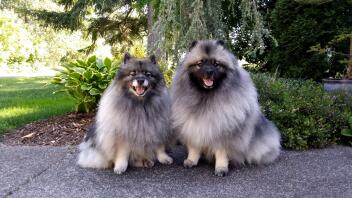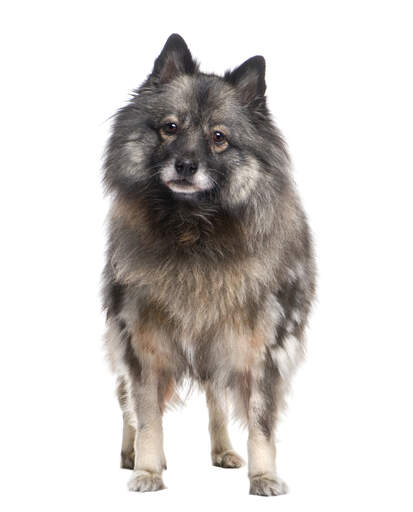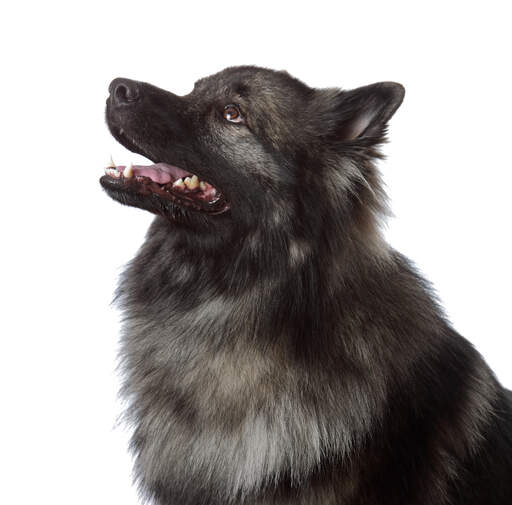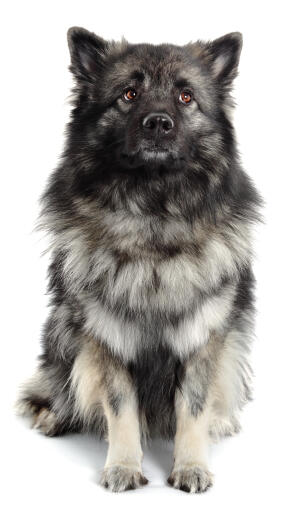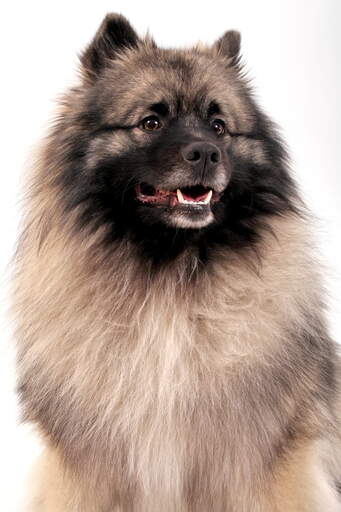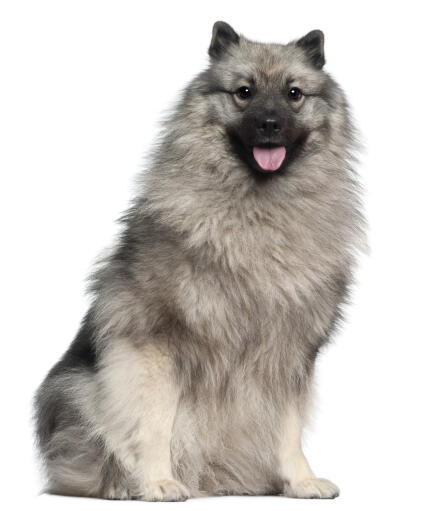Keeshond hund





History
The Keeshond originates from Holland and dates back to before the 17th century. It is also known as the 'Dutch Barge Dog' as it was predominately kept by barge owners that traveled the waterways, rivers and canals of Holland. One of the few breeds that was not bred for fighting or hunting, kept solely as a companion dog. They are related to the FInnish Spitz, Chow and Pomeranian. The most beloved dog in Holland, but not that well known outside of Europe.
Behaviour
Keeshond are playful, alert and active dogs, bred mainly as companions. They love being around people and are very good with children. They have a loud bark to warn you of strangers, but are friendly towards anyone they meet, if properly socialised. A vocal dog, but an ineffective guard dog. Their barking can become a problem if not taught early. Keeshonden get on well with other dogs and pets. Being a devoted companion dog makes training a bit easier. These are quick to learn, intelligent dogs who love to please their owner. They respond best to firm, loving training and rebel against harsh words or actions. They have an outgoing personality that can be mischievous at times if they get bored. They don't like to be left alone for long periods and can be destructive. They can suffer from separation anxiety, so need early training, being left for short periods. They are best suited to someone who is home for most of the day. Keeshonden are like shadows and will follow you everywhere. They do well with obedience and agility classes/competitions and are ranked quite highly on the dog intelligence list. Their joy for life is infectious and they love showing off. WIth their ability to learn quickly, other problems may arise. If they discover digging in the garden or chewing shoes/furniture, it needs to be stopped quickly. Keeshonden are an extremely affectionate breed and are often used as therapy dogs. They have been trained as Guide Dogs for the Blind, but their small size has prevented them being used more widely. They are active dogs and need regular walks; they can play for hours and need at least one long walk a day. They are generally responsive to their owners call and recall is not usually a problem. Due to their thick coat, they aren't fans of very hot weather and will seek out somewhere cool if they get too hot. They like water and love sitting in a childrens' paddling pool in hot weather. They shed hair constantly, but more so twice a year when moulting. Daily brushing will prevent fur all over your home, but that said, they are clean dogs and rarely need a bath, plus they don't really get that 'doggy odour'.
Keeshonden are generally healthy, but can suffer Canine Hip Dysplasia, cataracts, epilepsy and Addison's Disease.
Temperament
The Keeshond has a sensitive and playful temperament. They are a very people orientated breed that crave your affection and attention. Early socialisation is important with humans and other dogs as this breeds sensitive nature can sometimes manifest into timidity.
Needing moderate exercise daily to keep them happy the Keeshond will get on with children and other pets but don't expect them to be a guard dog as any bark they make is usually more welcoming than alarming.
Health Problems
Health problems that may affect Keeshonds include canine hip dysplasia (CHD), elbow dysplasia, luxating patella (dislocation of the knee cap), eye problems, skin problems and epilepsy.
Breed Details
- Status: Common
- Life Expectancy: 12 - 15 years
- Weight: 14 - 18 kg
- Højde: 17 - 18"
- Rare: Nej
- Coat: Medium
- Grooming Requirements: Everyday
- Town or Country: Either
- Minimum Home Size: Small House
- Minimum Garden Size: Small to Medium Garden
- Breed Type: Companion Dog
- Størrelse: Medium
- Energy Level: Medium
- Exercise Required: Up to 1 hour
Billeder af Keeshond
